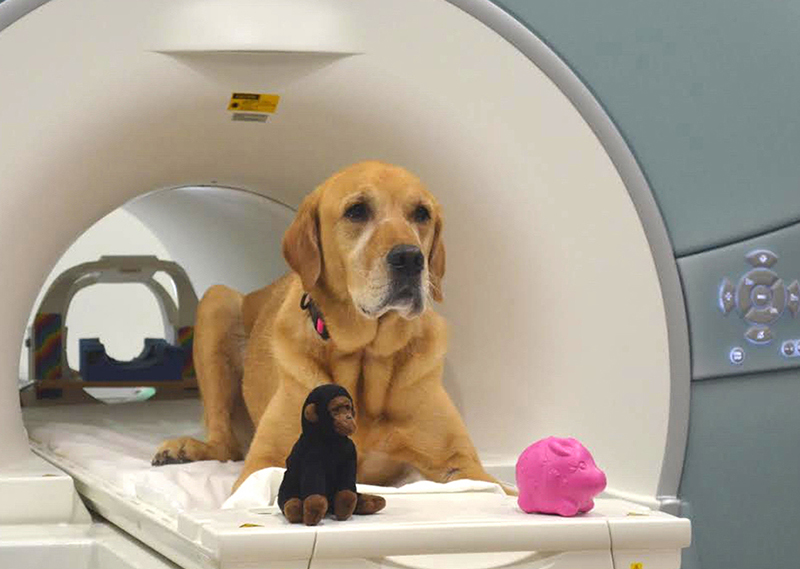Did you say 'squirrel'?
The results of the study by Emory scientists suggest that dogs have at least a rudimentary neural representation of meaning for words they have been taught, differentiating words they have heard before from those they have not.

When a dog hears the word, does it actually picture a small, bushy-tailed rodent in its mind?
Last fall, Frontiers in Neuroscience published one of the first studies using brain imaging to probe how our canine companions process words they have been taught to associate with objects.
The results of the study by Emory scientists suggest that dogs have at least a rudimentary neural representation of meaning for words they have been taught, differentiating words they have heard before from those they have not.
“Many dog owners think that their dogs know what some words mean, but there really isn’t much scientific evidence to support that,” says Ashley Prichard, a PhD candidate in Emory’s Department of Psychology and first author of the study. “We wanted to get data from the dogs themselves—not just owner reports.”
“We know that dogs have the capacity to process at least some aspects of human language since they can learn to follow verbal commands,” adds Emory neuroscientist Gregory Berns, senior author of the study. “Previous research, however, suggests dogs may rely on many other cues to follow a verbal command, such as gaze, gestures, and even emotional expressions.”

He's All Ears: Eddie, one of the dogs that participated in the study, poses in the fMRI scanner with two of the toys used in the experiments, "Monkey" and "Piggy."
Berns is founder of the Dog Project, which is researching evolutionary questions surrounding man’s best and oldest friend. The project was the first to train dogs to voluntarily enter a functional magnetic resonance imaging (fMRI) scanner and remain motionless during scanning, without restraint or sedation. Studies by the Dog Project have furthered understanding of dogs’ neural response to expected reward, identified specialized areas in the dog brain for processing faces, demonstrated olfactory responses to human and dog odors, and linked prefrontal function to inhibitory control.
For the current study, twelve dogs of varying breeds were trained for months by their owners to retrieve two different objects based on the objects’ names. Each dog’s pair of objects consisted of one with a soft texture, such as a stuffed animal, and another of a different texture, such as rubber, to facilitate discrimination. Training consisted of instructing the dogs to fetch one of the objects and then rewarding them with food or praise. Training was considered complete when a dog showed that it could discriminate between the two objects by consistently fetching the one requested by the owner when presented with both of the objects.
During one experiment, the trained dog lay in the fMRI scanner while the dog’s owner stood directly in front of the dog at the opening of the machine and said the names of the dog’s toys at set intervals, then showed the dog the corresponding toys.
Eddie, a golden retriever-Labrador mix, for instance, heard his owner say the words “piggy” or “monkey,” and then his owner held up the matching toy. As a control, the owner then spoke gibberish words, such as “bobbu” and “bodmick,” then held up novel objects like a hat or a doll.
The results showed greater activation in auditory regions of the brain to the novel pseudowords relative to the trained words.
“We expected to see that dogs neurally discriminate between words that they know and words that they don’t,” Prichard says. “What’s surprising is that the result is opposite to that of research on humans—people typically show greater neural activation for known words than novel words.”
The researchers hypothesize that the dogs may show greater neural activation to a novel word because they sense their owners want them to understand what they are saying. “Dogs ultimately want to please their owners, and perhaps also receive praise or food,” Berns says. “They may have varying capacity and motivation for learning and understanding human words, but they appear to have a neural representation for the meaning of words they have been taught, beyond just a low-level Pavlovian response.”


